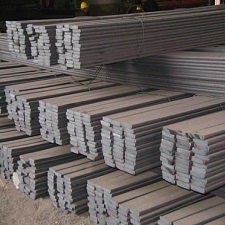Aluminium is one of the world's most valuable metals. It has the periodic table symbol Al and the atomic number 13. The colour of unalloyed Aluminum is silvery-white. Aluminium, refined from the ore bauxite, is extremely soft and pliable in its pure form. When it is alloyed, as it is most commonly, it becomes durable and long-lasting.

Aluminum Supplier in Singapore mainly produces aluminium. It is widely used for several purposes, including its non-toxicity, non-magnetism, corrosion resistance, lightweight, excellent electrical conductivity, and ability to survive exceedingly low temperatures. Furthermore, aluminium scrap can be recycled several times.
Aluminium and aluminium alloy products are useful in many industries, including architectural, chemical, defence, automotive, aerospace, transportation, marine, and food and beverage. In these and other sectors, producers take metal frames, aluminium plaques, and other types and turn them into a dizzying variety of products.
History
Until Aluminum, people used alum, an aluminium sulfate made from the same minerals that produce Aluminum. Alum was mentioned by several ancient historians, including Herodotus, a Greek historian who lived in the 5th century BC, and Pliny the Elder, a Roman historian who lived in the 1st century AD.
- They dyed cloth with alum. It became so common that alum was exported to mainland Europe until the 15th century.
- Aluminium oxide clays (alumina) are thought to have been used by the Romans to tan skins, fireproof houses, and administer first aid. They, on the other hand, did not consider the clay as Aluminum.
During the 16th century, scientists and alchemists made the first moves toward understanding Aluminum. This all started when Paracelsus, a Swiss physician and alchemist, proposed that alum was a different entity from sulfates, which they called insult at the time.
He proposed that alum was a salt formed by an element. In 1595, Andreas Libavius, a German chemist and doctor, discovered that copper(II) sulfate (then known as blue vitriol), iron(II) sulfate (then known as green vitriol), and alum could all be produced using the same acids but different elements. He couldn't find out what ingredient alum was made of, so he gave it a name–alumina.
- Then, in 1722, another German chemist, Friedrich Hoffmann, suggested that the alum base was an ingredient in its own right.
- Meanwhile, just six years later, a French chemist called Étienne Geoffroy Saint-Hilaire proposed that alum was an oxide formed by sulfuric acid reaction and an unknown Metal Fabrication Singapore element.
- Hans Christian rested, a Danish physicist, to discover the metal and construct an aluminium alloy in 1825.
- Aluminium became very famous after he learned how to refine it. However, since it was so costly, it was only popular with the wealthy. It was once more costly than gold. This was because it was difficult to find and refine.
Karl Josef Bayer invented a new aluminium extraction method in 1887, making Aluminum more available to manufacturers. A few other scientists invented alternative extraction methods before him, but he is the most well-known and widely used.
Aluminum Supplier in Singapore produces Aluminum became much cheaper as Bayer's methods spread. Its introduction to the market was ideally timed, as it allowed engineers to help construct new technology and machines such as vehicles, aeroplanes, and electrical wiring.